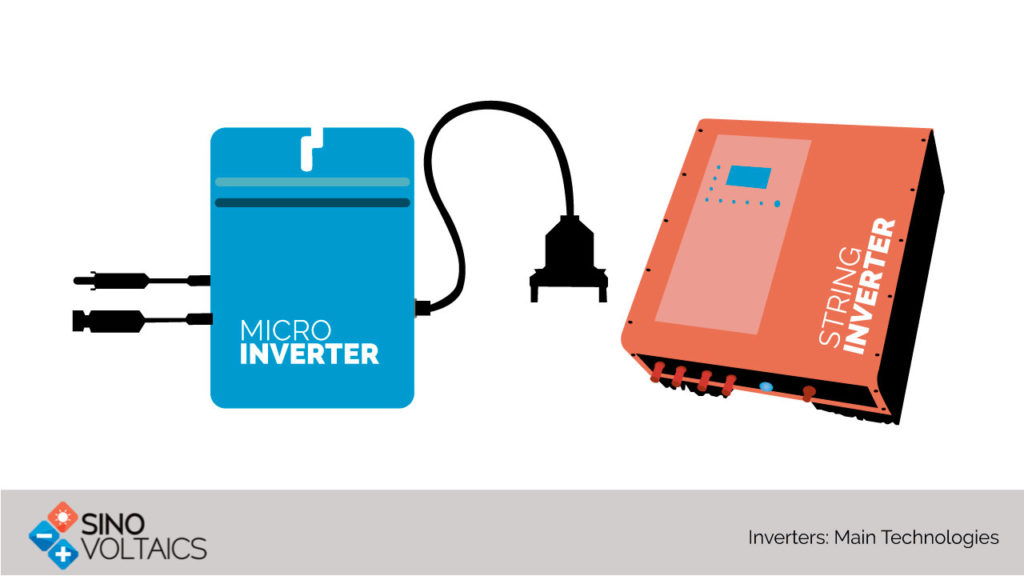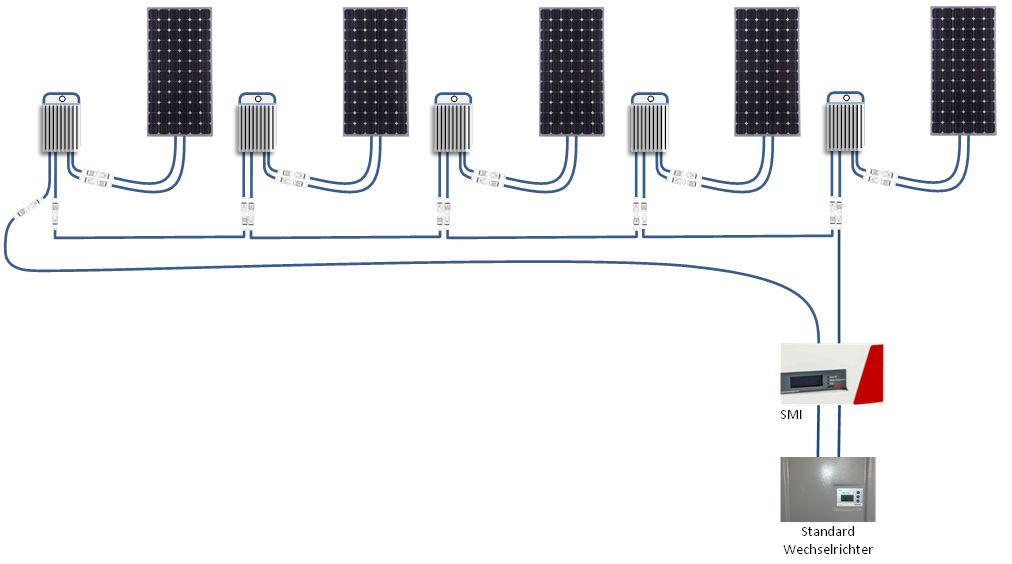Inverters: Main Technologies
Inverters are devices which produce AC from DC power. The advance of renewable energy has given a boost to their use since every solar power generation system must use one or more. Currently, there are two classes for use in solar energy. Traditionally, during installation they used a large inverter to invert the dc output of a number of panels in series (a string). This is the string inverter. Then, they install A micro inverter, normally, on a per panel basis, and often attach to or close to the panel.
For more please read here : https://sinovoltaics.com/learning-center/inverters/string-inverters-advantages-disadvantages/
The use of micro inverters has a special advantage against local shading. If a panel in a string is shaded it affects the entire string output. Micro inverters used on a per panel basis avoid this. Further, each micro inverter can employ maximum power point tracking on its own so that even the shaded panel will give the best performance under the circumstances. However, subassembly count is increasing, which will increase the overall cost and complexity of the system wiring. Experts expect that ultimately micro types will integrate with the panels. Though, manufacturers have to keep in mind that reduction in size may make heat dissipation more difficult. String inverters will handle many panels each. They reduce subassembly count and complexity of the system wiring, reducing overall system cost. String types will operate at higher DC voltages, and may have slightly better efficiencies. Also, a three phase output is possible. But string types suffer from the partial shading problem. Also, fault tracing is somewhat more complicated than in the case of single panel micro inversion. 
Because of the merits and demerits of both implementations, it is likely that a hybrid scheme may evolve, and already two micro inverters per string are being used. Sometimes the terms grid tied, off grid, and hybrid apply to inverters, but these are basically connection schemes. Grid tied do not need batteries but must have anti-Islanding protection in case of grid failure. Off grid systems must have a large battery backup for night times and long rainy spells. Hybrid connections provide advantages of both.
To learn more in details, please visit: https://www.solarpowerworldonline.com/2016/05/different-types-solar-inverters/

